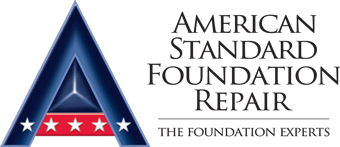Commercial Wall Anchoring Service
Commercial Wall Anchoring
The relentless force of groundwater and storm runoff takes a toll on foundations, basements, and retaining walls over time. Correctly stated, basement walls are retaining walls. A retaining wall is any vertical structure intended to hold back soil and water. A retaining wall may be part of the foundation, such as a basement or stem wall seen in conventional crawlspace homes. A retaining wall may also be a structure not associated with a building used to direct water flow and hold back soil slopes and the associated water behind the wall.
Properly designed and installed retaining walls always have drainage elements behind the wall to assist in relieving the hydrostatic pressure that is the primary cause of failure of these types of walls. Properly designed walls also have vertical supports that resist movement and bulging from the tons of pressure caused by soil and water behind the wall. These vertical supports may be observed as steel beams or pilasters built against the wall to resist this pressure. These vertical supports may also be hidden inside the wall as rebar and concrete.
Many well-designed walls also have a waterproofing component on the exterior that prevents water seepage, degrading the wall's integrity over time. The slow and relentless water seepage causes damage to walls through the wall. When retaining walls suffer damage or fail prematurely, a complete repair plan will always have three simple components:
- Secure the wall to arrest movement and improve structural integrity if possible.
- Add waterproofing to prevent water damage due to infiltration through the wall which loosens mortar and decreases integrity.
- Improve drainage to reduce hydrostatic pressure, the most significant force acting on the wall.
When retaining or foundational walls begin to crack, tilt, or bow, it stands as strong evidence that they are not providing the support needed for load-bearing structures and therefore require stabilization.
While anchoring systems are essential for retaining walls, they are also used in many other commercial structure applications. A proficient and conscientious engineer will often place wall anchors in the design of large retaining walls when excessive pressures are anticipated. Wall anchors are a method of achieving the first of the three requirements of a complete wall repair plan that we discussed above.
The first thing to do is to secure a wall. While wall anchors are not always part of the solution, large structural walls with excess pressure that have mild to moderate displacement provide a way of securing the wall in its current position. Wall anchors may make mild improvements in cracks and the displacement of a damaged wall, but they are never used in an attempt to put a damaged wall back in its original position. No company can achieve this short of removing and replacing the wall. The more cost-effective solution is often to secure the wall where it is, improve drainage to decrease pressure, and then deal with the cosmetic aspects of the wall to return things to a structurally sound and aesthetically pleasing state.
Whether used to stabilize a retaining wall, basement wall, or other structure, an anchoring system requires several feet of access to stable soil outside the wall or the structure being supported. Depending on the type of structure and exterior landscaping, wall anchors may be installed as horizontal helical piles screwed into the soil from the structure's interior extending outward to dense, stable soil. The wall plate is added, and concrete deadman anchors are poured at the steel rod's end to hold back the wall. If access by small compact machinery especially made for interior placement of anchors, is not available, wall anchors may also be dug exterior to the structure and placed through the wall from the exterior to the interior.
Commercial structures use various building materials for retaining walls and foundations, and different materials call for a properly engineered anchoring system to fit the many variables encountered in today's structures. Block walls are commonly used in commercial buildings and come in hollow and solid block styles. Hollow blocks call for anchoring plates and ties capable of providing load support across the entire wall surface. After stabilizing the wall with anchors, we often drill a hole at the top of each column in the wall and fill it with concrete using a long hose and a concrete pump. This improves the structural integrity of the entire wall and allows the anchors to hold back the full structure effectively, not just the blocks in contact with the wall anchor plate.
American Standard Foundation Repair is the first choice of commercial and industrial facility owners and managers for professional structural inspections and repairs. Owner Jae Wells, who also serves as President of the National Foundation Repair Association, proudly leads our team of expert engineers and inspectors in assisting clients throughout the Memphis, TN, Knoxville, TN, and Rogers, AR metropolitan and surrounding areas.
Contact us today with your questions about wall anchoring and other foundation issues. We look forward to being of service.






